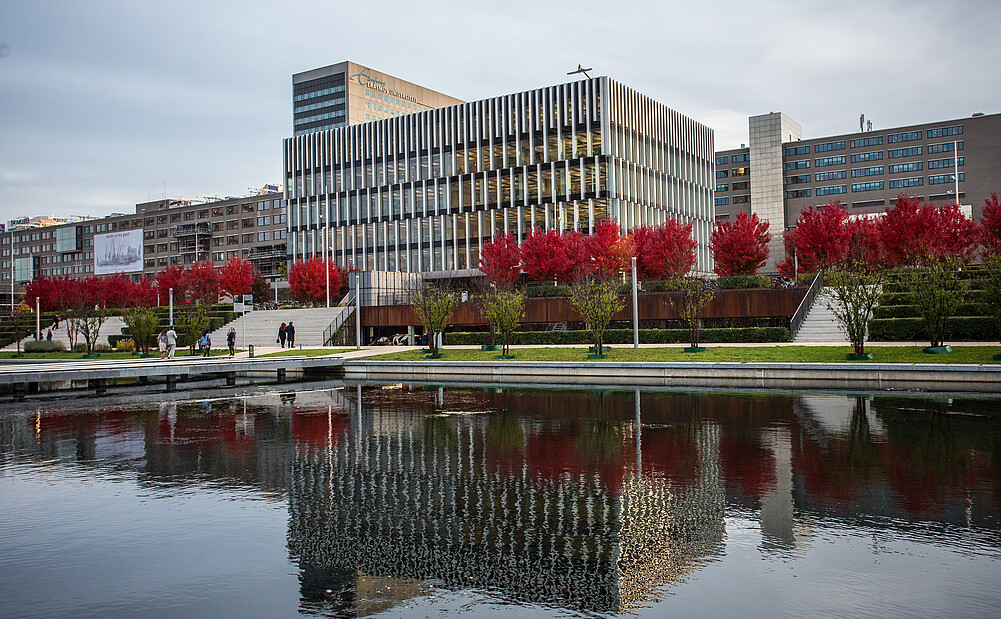

Article: Wednesday, 12 February 2014
Much criticism was levelled at the USA's Troubled Asset Relief Program (TARP) at the time it was announced in the autumn of 2008. Many of its opponents argued that not a penny of taxpayer money should have been spent on shoring up US banks. But were they right?
Critics of TARP believed that bankers should be punished for their own sins, that the money that was put into bankers’ pockets would never be returned, and that such an action would benefit no one but the guilty bankers.
As we came to realise during the research of our paper – "The Impact of Government Intervention in Banks on Corporate Borrowers’ Stock Returns" – the argument against the use of taxpayer money to prop up ailing private sector financial institutions does in fact have a number of weaknesses.
Hindsight enables us to take a more rounded view. Through the Capital Purchasing Program (CPP) component of the TARP, the banking industry received an infusion of quasi-equity. This played a key role in ensuring that no major bank would follow Lehman Brothers and go out of business because of an unnecessary shortage of liquidity.
Indeed, official figures show that the bulk of the funds injected were repaid in a relatively short time. According to the department of financial stability of the US Treasury, bank TARP repayments showed a 111.4 per cent recovery rate as of end-October 2013. The money injected into banks via the CPP programme is thus already largely repaid; it is a matter of fact that no taxpayer money has been wasted.
Our study highlights the positive effects of government interventions during the crisis.
The repercussions reverberate well beyond the banking industry, which doesn't exist in isolation but is very much connected to the real economy. The benefits were more widespread. Corporates, their investors and their staff also benefitted from the dramatic stabilisation of the market enabled by the US Government's temporary capital injection.
The bailout boosted the corporate borrowers as the positive impacts of the injection of liquidity spread through and around the financial and industrial universes. Our findings highlight the importance of the spillover effects from the banking industry to the corporate world via the relationship between banks and corporates: the bank lending channel.
Previous research shows that negative shocks were transferred to corporate borrowers during the financial crisis. This is popularly referred to as the shift from Wall Street to Main Street. Our paper documents clearly just how the positive shocks of the government-initiated capital injections into banks can also be transferred to Main Street via the same channel, the bank-corporate relationship.
In particular, we investigate whether and how government interventions in the US banking sector came to influence the stock market performance of corporate borrowers during the financial crisis of 2007-2009.
We measure firms’ exposures to government interventions with an intervention score that is based on combined information on the structure of their relationships with banks and their banks’ participation in the government capital support programs. We find that government capital injections into banks have a significantly positive impact on the stock prices of the borrowing firms.
The effect is more pronounced for smaller and bank-dependent firms and those that borrow from banks that are less capitalised and smaller. Our study highlights the positive effects of government interventions during the crisis; it documents how the alleviation of financial shocks to banks led to significantly positive valuation effects in the corporate sector.
The overall evidence shows that the government-initiated capital injection programme helped support the flow of funds to corporate borrowers; companies that might otherwise have gone out of business were able to continue operating.
Our results also provide strong evidence on the existence of an important link between the financial industry and the real economy, and how shocks can spill over across industries. This causes us to reconsider the nexus between the financial sector and the real economy.
Our evidence suggests that in an economic recession, policy makers could restart the economic engine by carefully implementing a policy with the specific goal of reactivating the bank lending channel. If a government implements this policy carefully, capital injections into banks could be one effective way to restart bank lending to the real economy.

As observed in our paper, such a policy would especially benefit businesses that are smaller and subject to tighter financial constraints; those firms are the keys to boost economic recovery and to provide new and continuing employment opportunities.
It might offend staunch capitalist fundamentalists. But there can be little doubt that at least some of those who criticised the programme so vocally might well still be gainfully employed in a business that has survived as a result of government intervention into its bank.

This article is based on the paper "The Impact of Government Intervention in Banks on Corporate Borrowers’ Stock Returns", which was written by Lars Norden, Peter Roosenboom and Teng Wang. The paper is forthcoming in the Journal of Financial and Quantitative Analysis (STAR) and can be downloaded at http://ssrn.com/abstract=2021134


Science Communication and Media Officer

Corporate Communications & PR Manager
Rotterdam School of Management, Erasmus University (RSM) is one of Europe’s top-ranked business schools. RSM provides ground-breaking research and education furthering excellence in all aspects of management and is based in the international port city of Rotterdam – a vital nexus of business, logistics and trade. RSM’s primary focus is on developing business leaders with international careers who can become a force for positive change by carrying their innovative mindset into a sustainable future. Our first-class range of bachelor, master, MBA, PhD and executive programmes encourage them to become to become critical, creative, caring and collaborative thinkers and doers.
